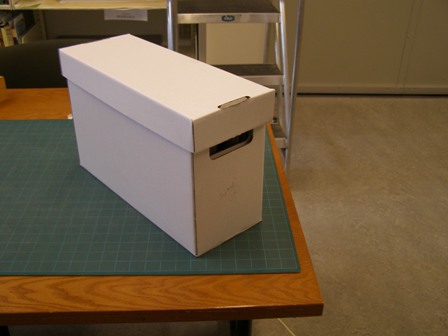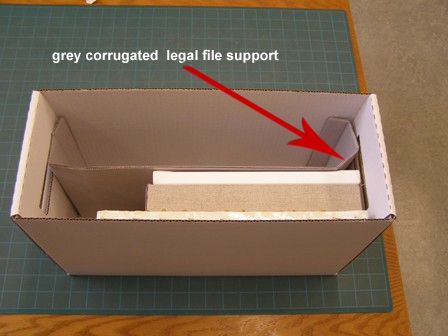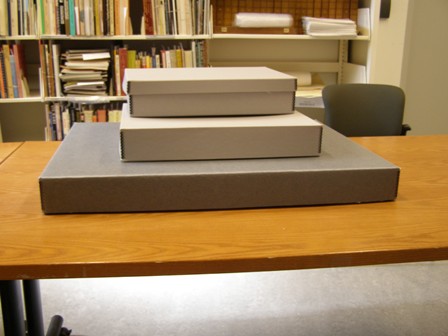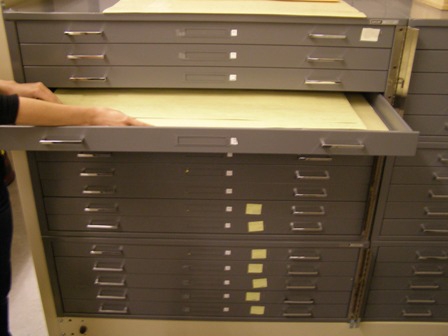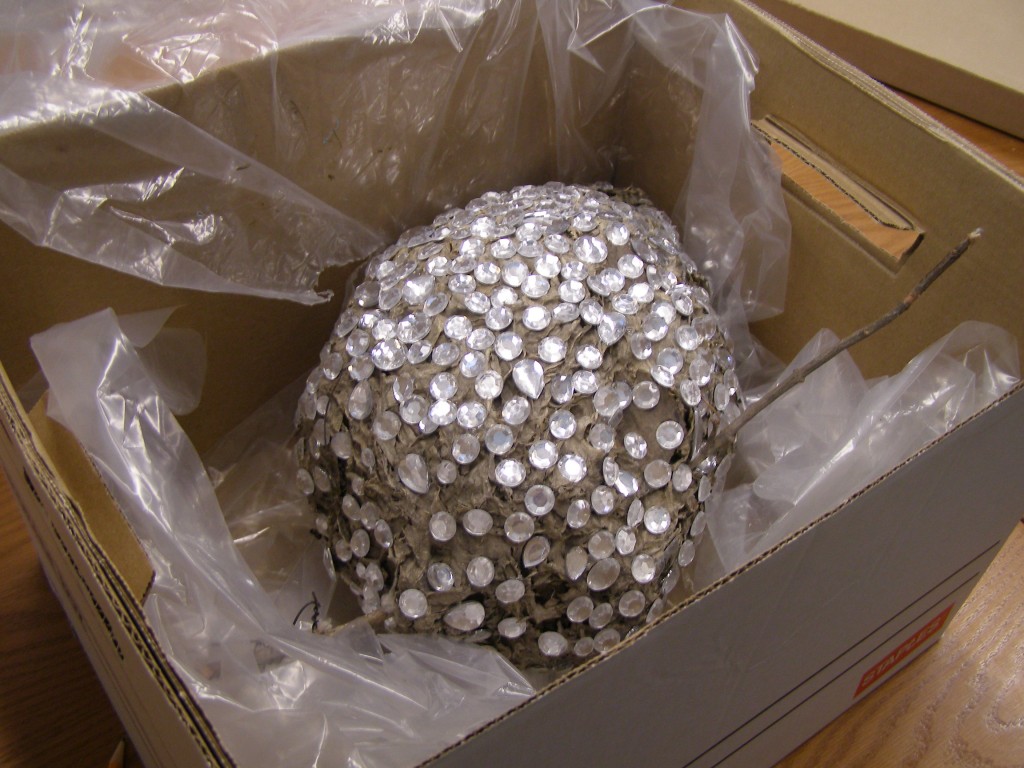
Archivists note: This past week was a busy one: the student archivists worked hard on packing the accrual into appropriate containers for storage. All collections need to be re-housed into archivally appropriate containers, but this one is a particular challenge to wrangle because of the oddly shaped and sized objects. Below the students describe some basic conservation work on one of the collection’s more atypical items…
In our last post, we talked about how we approached processing a bejeweled hornet’s nest. As it turns out, this wasn’t the only unusual or unique item that required extra thought in terms of preservation and special storage. This old pizza box with calligraphy (complete with grease stains, encrusted cheese, and lingering pizza odor) needed to be cleaned before being permanently housed as part of the fonds.
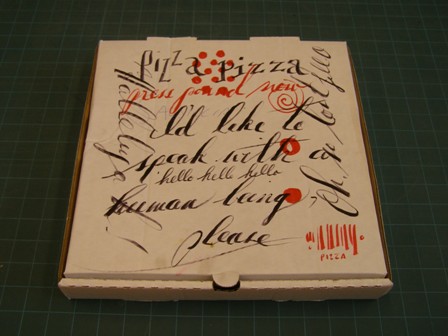
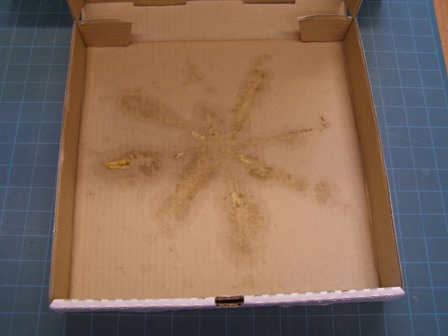
Coupland pizza box with calligraphy
In this case, the stuck-on food particles were of particular concern. As a general rule, no food or beverages are allowed inside RBSC. Not only could spilled coffee or ketchup stain or permanently damage the materials, but lingering crumbs could attract certain, ahem…undesirable patrons—namely critters like cockroaches or, heaven forbid, rodents.
So what did we do with the crusty pizza box, you ask? We began by isolating the pizza box so that it wouldn’t contaminate any of the other materials. A separation sheet marks the pizza box’s original location in relation to the other materials and directs future users to its new “home”—a special archival quality box that it gets all to itself. The next step was to do some surface cleaning to remove the crumbs, cheese bits, and as much of the grease stain as possible.
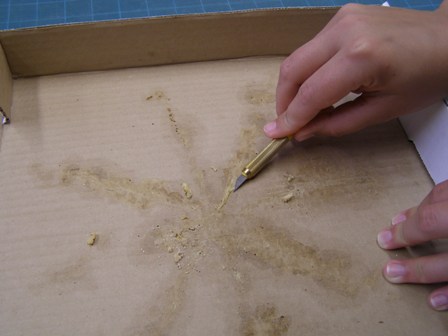
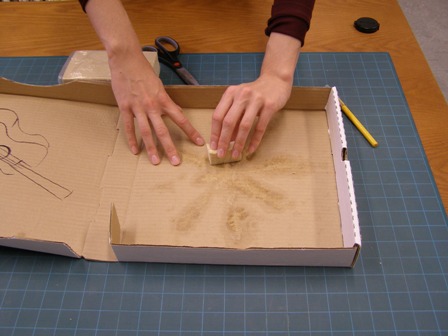
Pizza box surface cleaning
We began by gently scraping off bits of cheese and crumbs with a scalpel. We took great care to not damage the box and to fully isolate and dispose of the rogue crumbs in the nearest rubbish receptacle. Our next step was to give the box a thorough cleaning with a chemical sponge. These sponges were originally designed to remove soot and grease caused by fire damage, but they work wonders on dirty archival documents. The stain is still visible on the Coupland pizza box, but the process did remove some of the excess grease.
Before being stored in its archival box, the pizza box was sealed inside a large Ziploc bag to lock in any remaining odor or microscopic food particles that might attract pests.
Finally, this item, like all special collections materials, will be stored inside RBSC’s environmentally storage areas. This item and most other paper-based archival material will live in the Automated Storage and Retrieval System (ASRS) which maintains a temperature and relative humidity that makes it very hard for most pests to live in.
For more information on the topic of pest management, please visit the Northeast Document Conservation Center website.
So, even though you may not be able to eat your own slice of pizza while visiting RBSC, you can always access and take a whiff of Coupland’s pizza box—the musty pizza smell is sure to cure anyone’s persistent tummy grumbles.


